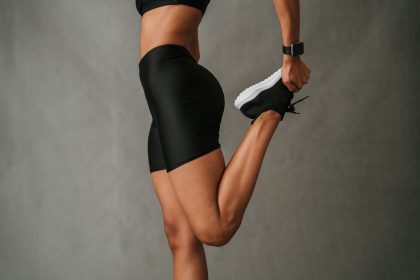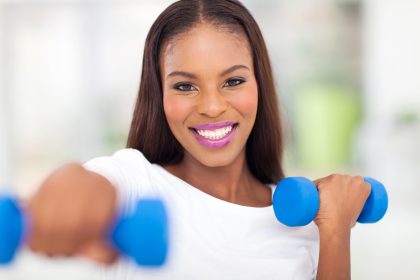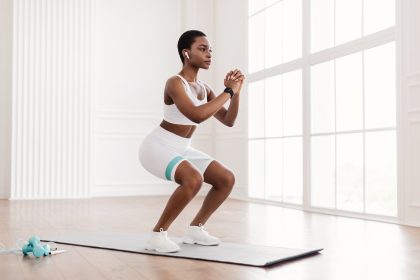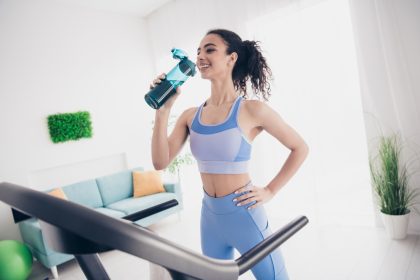The journey into your 40s brings wisdom and confidence, but also introduces new physical challenges that require a fresh approach to fitness. Many women discover that exercise routines that worked in their 20s and 30s no longer deliver the same results, leaving them frustrated and uncertain about how to proceed.
The good news? With targeted strategies specifically designed for midlife bodies, women over 40 can experience remarkable improvements in energy, strength, and overall wellbeing. This comprehensive guide presents practical, effective approaches to fitness that acknowledge the realities of busy schedules while delivering meaningful results.
The misunderstood benefits of midlife exercise
While aesthetics often dominate fitness conversations, the advantages of regular exercise for women in their 40s extend far beyond appearance. Understanding these broader benefits provides powerful motivation to maintain consistency even when immediate visual results prove elusive.
Regular physical activity during this life stage helps prevent the accumulation of stubborn midlife weight gain that often accompanies hormonal shifts. Beyond weight management, appropriate exercise significantly reduces osteoporosis risk by strengthening bone density – a critical concern as estrogen levels naturally decline.
Women who maintain fitness routines throughout their 40s experience improved functional strength, making everyday activities easier and reducing injury risk. The preservation of lean muscle mass becomes increasingly important during this decade, as the body naturally begins to lose muscle tissue without intervention.
Many women report that consistent exercise helps manage perimenopausal and menopausal symptoms, from mood fluctuations to sleep disturbances. Joint health improves with appropriate movement, reducing discomfort and maintaining mobility. Perhaps most significantly, regular physical activity dramatically reduces the likelihood of developing numerous age-related medical conditions.
Navigating common roadblocks to fitness success
Despite understanding these benefits, many women struggle to implement consistent exercise routines. Time constraints represent the most frequently cited barrier, with professional obligations and family responsibilities leaving little opportunity for lengthy workouts.
Limited access to fitness facilities presents another common challenge, particularly for women in rural areas or those with unpredictable schedules. Financial considerations may also restrict access to personal training or specialized equipment.
The fitness industry itself creates additional obstacles through messaging that often excludes midlife women. Social media platforms overflow with content featuring younger bodies performing advanced movements, while practical guidance for aging physiology remains scarce.
Fortunately, effective fitness doesn’t require endless hours, specialized equipment, or extraordinary physical capabilities. With just 3-4 hours of dedicated exercise weekly, some floor space at home, and basic equipment like resistance bands and light dumbbells, women can achieve remarkable improvements in physical function and wellbeing.
The balanced weekly workout template
Creating structure through a flexible weekly schedule allows for consistency while accommodating life’s inevitable disruptions. This balanced approach incorporates various movement types to develop comprehensive fitness:
- Monday morning: Low-intensity steady-state cardio (20-40 minutes)
- Tuesday morning: Full-body strength circuit (30-40 minutes)
- Wednesday morning: High-intensity interval training (20-30 minutes)
- Thursday morning: Mobility and flexibility work (20-30 minutes)
- Friday morning: Full-body strength circuit (30-40 minutes)
- Saturday morning: Low-intensity steady-state cardio (20-40 minutes)
- Sunday morning: Mobility and flexibility work (20-30 minutes)
Additionally, aim for 5,000-10,000 daily steps, distributed throughout the day rather than accumulated in a single session. This approach makes movement more accessible while providing substantial health benefits.
The essential workout elements explained
Each workout type serves a specific purpose in creating balanced fitness for midlife bodies. Understanding these components helps women implement them effectively:
The proper warm-up sequence
Every workout should begin with preparation that gradually increases circulation and joint mobility. Spend approximately 10 minutes with: 5-8 minutes of gentle cardio movement like walking or marching in place; Mobility exercises targeting major joints including shoulders, hips, and spine; Dynamic stretches that move through ranges of motion rather than holding static positions
This preparation significantly reduces injury risk while improving workout performance.
Low-intensity steady-state cardio options
LISS cardio involves continuous movement at a moderate pace for 20-40 minutes, maintaining a heart rate around 50-65% of maximum. This intensity allows conversation while exercising without excessive breathlessness.
Effective options include brisk walking (especially on inclines), recreational cycling, swimming, elliptical training, or rowing machine workouts. The key lies in finding activities you genuinely enjoy, as consistency matters more than intensity for this training type.
Strength circuit fundamentals
Strength training delivers particularly important benefits for women over 40, supporting metabolism, posture, and functional capacity. A basic circuit might include:
- Air squats (15-20 repetitions) – targets legs and core
- Modified push-ups (8-10 repetitions) – develops chest, shoulders, arms
- Dumbbell rows (8-10 repetitions per side) – strengthens back and arms
- Lateral lunges (10-12 repetitions per side) – improves hip mobility and leg strength
- Dumbbell shoulder press (10-12 repetitions) – builds upper body stability
- Resistance band pulldowns (10-12 repetitions) – enhances posture
- Hip bridges (15-20 repetitions) – activates glutes and hamstrings
- Core stabilization (10-12 repetitions per side) – develops trunk control
Complete this circuit 2-3 times with minimal rest between exercises. Use weights that feel challenging but manageable for the prescribed repetitions.
High-intensity interval training approach
HIIT alternates brief periods of intense effort with longer recovery intervals, creating an efficient metabolic stimulus. A simple format involves: Warm up thoroughly for 5-8 minutes; Alternate between 30 seconds of high-intensity work and 90 seconds of easy recovery; Complete 8-10 rounds total and; Cool down properly for 5-8 minutes
Suitable activities include cycling, running/walking intervals, bodyweight exercises, or swimming. The key principle involves pushing to near-maximum effort during work intervals while fully recovering between efforts.
Mobility and flexibility practices
Dedicated sessions focusing on joint mobility and muscle flexibility become increasingly important with age. These practices reduce discomfort, improve movement quality, and accelerate recovery between more intense training days.
Yoga provides an excellent option, particularly styles like Hatha or Yin that emphasize proper alignment and longer holds. Alternative approaches include guided stretching routines, foam rolling sessions, or gentle movement exploration focusing on ranges of motion.
The essential cool-down
Every workout should conclude with 5-8 minutes of progressively slower movement followed by static stretching for major muscle groups. This practice facilitates recovery, reduces muscle soreness, and promotes relaxation.
Nutritional strategies that complement fitness
Exercise provides only half the equation for midlife wellness. Nutritional approaches specific to women over 40 enhance energy, support recovery, and optimize body composition:
Portion awareness versus restriction
Rather than severe caloric restriction, focus on appropriate portion sizes aligned with activity levels and goals. Most women benefit from slightly smaller meals than in earlier decades due to natural changes in metabolic rate.
Protein prioritization
Include quality protein sources with every meal to preserve muscle tissue and enhance recovery. Aim for 25-30 grams per main meal through options like lean meats, fish, eggs, Greek yogurt, cottage cheese, tofu, or legumes.
Vegetable abundance
Fill half your plate with non-starchy vegetables to increase nutrient density while managing caloric intake. This approach naturally crowds out less nutritious options while providing essential vitamins and minerals.
Strategic fat inclusion
Incorporate moderate amounts of healthy fats like avocados, nuts, seeds, and olive oil to support hormone production and cellular health. These foods enhance satiety while providing essential fatty acids.
Processed food reduction
Minimize reliance on highly processed convenience foods, which often contain excessive sodium, unhealthy fats, and added sugars. Focus instead on whole foods that require minimal processing.
Sugar awareness
Develop awareness of both obvious and hidden sugar sources in your diet. Read labels carefully, as many seemingly healthy products contain surprising amounts of added sweeteners.
Home meal preparation
Take control of ingredients and portions by preparing most meals at home. Batch cooking simplifies this process, allowing you to prepare multiple meals simultaneously when time permits.
Beverage mindfulness
Choose primarily calorie-free beverages like water, unsweetened tea, or black coffee. Liquid calories add up quickly and typically provide minimal satiety compared to solid foods.
The sustainable fitness mindset
Perhaps most importantly, women over 40 benefit from approaching fitness as a long-term lifestyle rather than a temporary project. Consistency over time delivers far greater benefits than periodic intense efforts followed by abandonment.
Focus on establishing sustainable habits that integrate naturally into your existing routine. Celebrate improvements in energy, mood, and functional capacity rather than focusing exclusively on aesthetic outcomes.
Remember that fitness journeys involve inevitable fluctuations. Periods of greater and lesser intensity will occur throughout life, but maintaining some form of movement during challenging times preserves progress and simplifies returning to fuller routines when circumstances allow.
With targeted strategies specifically designed for midlife bodies, women over 40 can experience remarkable improvements in quality of life through fitness. The combination of appropriate exercise selection, nutritional awareness, and consistency creates profound transformation without requiring extreme measures or unrealistic time commitments.














